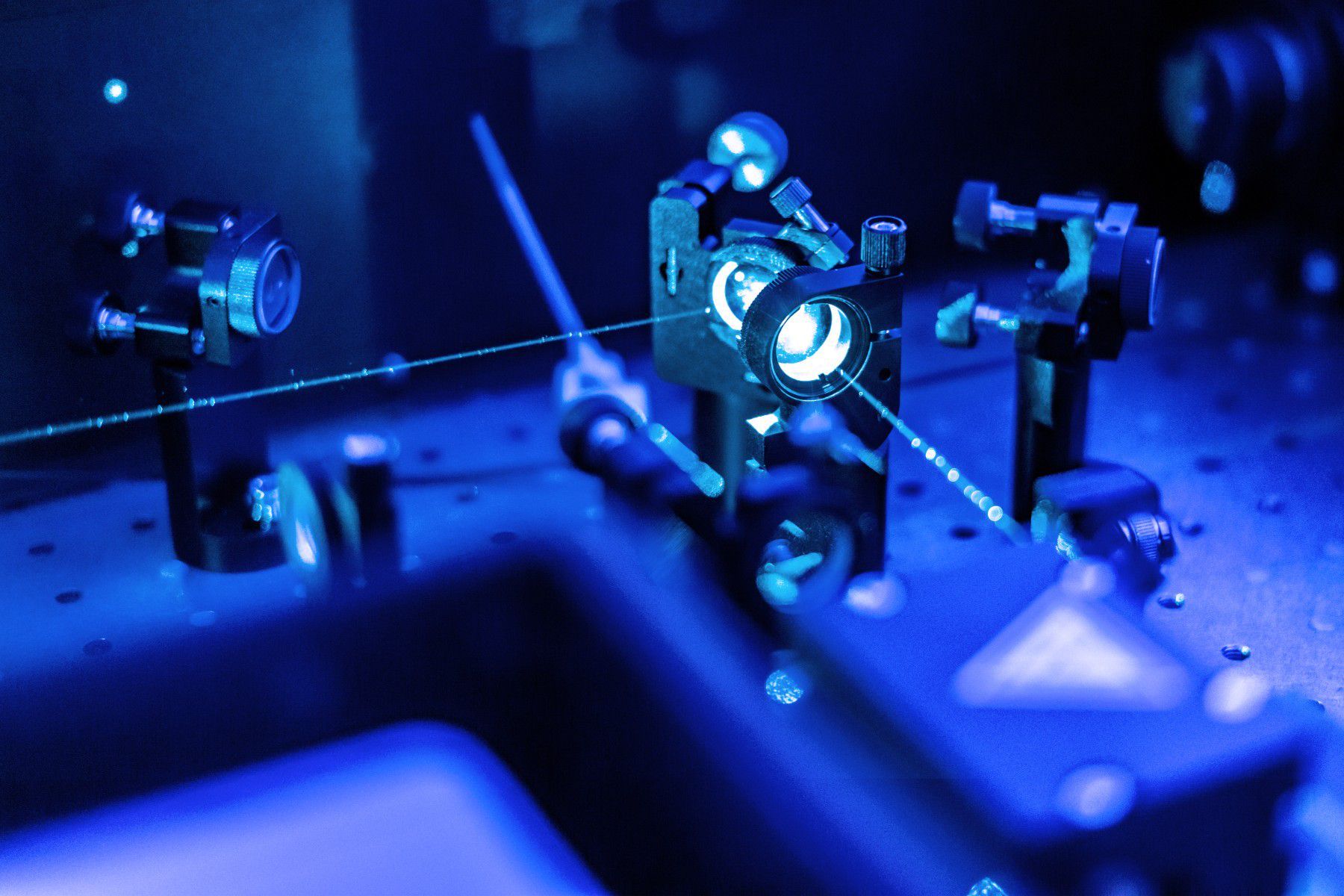Laser and innovation
Investor relations
Governance
Sustainability
Work with us
News
Contacts
The word LASER is an acronym of “Light Amplification by Stimulated Emission of Radiation” and is the technological core of El.En. Group. In simple terms, light particles (photons), excited by the current, release energy in the form of light: this light is directed into a beam, the laser beam.

How does a laser work?
All lasers consist of 3 components:
The pump source conducts external energy to the laser. The active laser medium is located inside the laser.
Depending on the design, the laser medium may consist of a gas mixture (CO2 laser), a crystal body (YAG laser), or glass fibres (fibre laser). When energy is transferred to the laser medium through the pump, it is emitted in the form of radiation.
The active laser medium is positioned between two mirrors, the “resonator”. One of these mirrors is one-way. The radiation of the active laser medium is amplified by the resonator. At the same time, only a certain amount of radiation can leave the resonator through the one-way mirror. This directed radiation is laser radiation.
Over the years, El.En. Group has specialised in the design and manufacture of multiple types of laser sources and applications for the medical and industrial sectors: from laser systems for medicine and aesthetics to laser systems for manufacturing. Each of the two sectors includes numerous differentiated segments for the specific application of the laser system, and therefore for the specific underlying technologies and for the type of user.
As Prof. Gérard Mourou - 2018 Nobel Prize laureate in physics for the invention of chirped pulse amplification, or CPA, later used to create ultrashort very high-intensity (terawatt) laser pulses - said during his visit to one of the El.En. Group’s companies:
“The best is yet to come!” because El.En. Group lasers will always find new and innovative applications and fields of application.